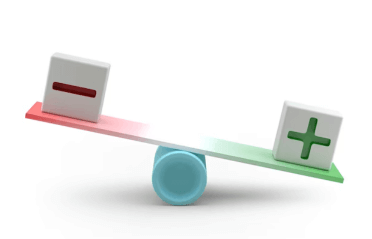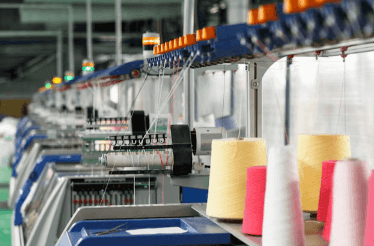Question
a.
10%
b.
30%
c.
50%
d.
80%
Posted under Basic Chemical Engineering
Interact with the Community - Share Your Thoughts
Uncertain About the Answer? Seek Clarification Here.
Understand the Explanation? Include it Here.
Q. In a batch process, 5 mole of H₂ and 3 mole of CO₂ entered a vessel with some CO₂, if 10 mole of product leaves the vessel, what is the percentage of H₂ in the product?
Similar Questions
Explore Relevant Multiple Choice Questions (MCQs)
Q. In a batch process, 2 mole of SO₂ and 3 mole of CO₂ entered a vessel with some SO₂, if 5 mole of product leaves the vessel, what is the percentage of SO₂ in the product?
View solution
Q. In a batch process, 5 mole of SO₂ and 3 mole of CO₂ entered a vessel with some SO₂, if 10 mole of product leaves the vessel, what is the percentage of SO₂ in the product?
View solution
Q. Solution-1 at the rate F combines with solution-2 at the rate D, their combination gives the product at the rate P, what is the equation of material balance?
View solution
Q. Solution-1 containing 30% sulfuric acid flowing at the rate 10 Kg/min combines with Solution-2 containing 20% sulfuric acid flowing at the rate 5 Kg/min, if their product is out at the rate 20 Kg/min what is the percentage of sulfuric acid in the product?
View solution
Q. Solution-1 containing 10% nitric acid flowing at the rate 10 Kg/min combines with Solution-2 containing 40% nitric acid flowing at the rate 5 Kg/min, if their product contains 30% nitric acid, what is the flow rate of product?
View solution
Q. Solution-1 containing 10% nitric acid and 20% acetic acid at the rate F combines with Solution-2 containing 20% nitric acid and 10% acetic acid at the rate D, the product formed contains 30% nitric acid and 20% acetic acid at the rate P, how many independent equations containing F, D, and P are possible?
View solution
Q. Solution-1 containing 10% hydroChloric acid and 20% acetic acid at the rate F combines with Solution-2 containing 20% hydroChloric acid and 30% acetic acid at the rate D, the product formed contains 20% hydroChloric acid and 30% acetic acid at the rate P, how many independent equations containing F, D, and P are possible?
View solution
Q. Solution-1 containing 40% nitric acid and 20% carbon dioxide at the rate F combines with Solution-2 containing 30% nitric acid and 40% carbon dioxide at the rate D, the product formed contains 30% nitric acid and 20% carbon dioxide at the rate P, If P = xF what is x?
View solution
Q. Solution-1 containing 40% acetic acid and 20% carbon dioxide at the rate F combines with Solution-2 containing 20% acetic acid and 40% carbon dioxide at the rate D, the product formed contains 30% acetic acid at the rate P, what is the percentage of carbon dioxide in product?
View solution
Q. Solution-1 containing 20% w₁ and w₂ at the rate 10 Kg/min combines with Solution-2 containing 10% w₁, 20% w₂ and w₃ at the rate 20 Kg/min, the product formed contains and 10% w₁, 30% w₂ and 20% w₃ , what is the percentage of w2 in solution-1?
View solution
Q. CH₄ at the rate 10 mole/min is reacted with O₂ at the rate 10 mole/min, what is the rate of formation of CO₂ in the product?
View solution
Q. CH₄ at the rate 10 mole/min is reacted with O₂ at the rate 30 mole/min, what is the rate of formation of CO₂ in the product?
View solution
Q. Solution-1 containing 30% acetic acid and 20% nitrogen at the rate F combines with Solution-2 containing 20% acetic acid and 10% nitrogen at the rate D and Solution-3 containing 10% acetic acid and 30% nitrogen at the rate N the product formed contains 20% acetic acid at the rate P, what is the percentage of nitrogen in product?
View solution
Q. Solution-1 containing 30% acetic acid and 20% nitrogen at the rate F combines with Solution-2 containing 20% acetic acid and 10% nitrogen at the rate D and Solution-3 containing 10% acetic acid and 30% nitrogen at the rate N the product formed contains 20% acetic acid at the rate 10 Kg/min, what is the percentage of nitrogen in product?
View solution
Q. Solution-1 containing 30% acetic acid and 100% nitrogen at the rate 10 Kg/min combines with Solution-2 containing 20% acetic acid and 10% nitrogen at the rate 20 Kg/min and Solution-3 containing 10% acetic acid and 30% nitrogen at the rate 30 Kg/min the product formed contains 20% acetic acid, what is the percentage of nitrogen in product?
View solution
Q. Solution-1 containing 30% acetic acid and 20% nitrogen at the rate 10 Kg/min combines with Solution-2 containing 20% acetic acid and 10% nitrogen at the rate 20 Kg/min and Solution-3 containing 10% acetic acid and 30% nitrogen at the rate N the product formed contains 20% acetic acid at the rate P, what is the percentage of nitrogen in product?
View solution
Q. An aqueous solution with sulfur 10 g/L at the rate is 100 L/min and an organic compound with no sulfur at the rate 50 L/min were put into an extraction machine and produced aqueous solution with sulfur 1 g/L, what is the amount of sulfur in organic compound after extraction?
View solution
Q. An aqueous solution with chlorine 30 g/L and an organic compound with no chlorine at the rate 50 L/min were put into an extraction machine and produced aqueous solution with chlorine 5 g/L and organic compound with chlorine 10 g/L, what is the rate of aqueous solution?
View solution
Q. A gas mixture input is given to a membrane with 40% O₂ and 60% N₂, the waste contains 80% of the input and the product contains 25% O₂ and 75% N₂, what is the percentage of O₂ in the waste?
View solution
Q. A gas mixture input is given to a membrane with 20% O₂ and 80% N₂, the waste contains 60% of the input and the product contains 30% O₂ and 70% N₂, what are the number of moles of O₂ in the waste?
View solution
Recommended Subjects
Are you eager to expand your knowledge beyond Basic Chemical Engineering? We've handpicked a range of related categories that you might find intriguing.
Click on the categories below to discover a wealth of MCQs and enrich your understanding of various subjects. Happy exploring!








